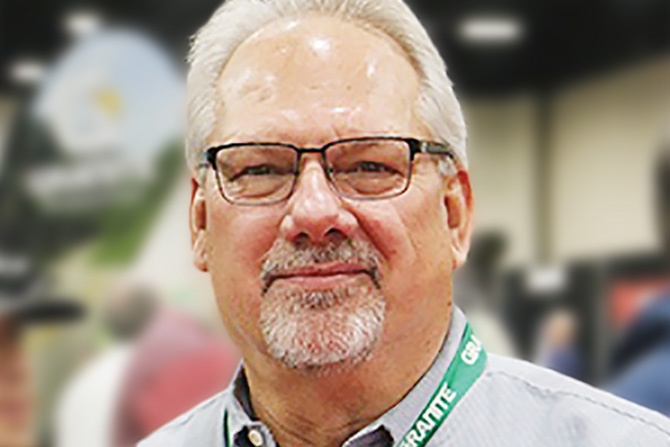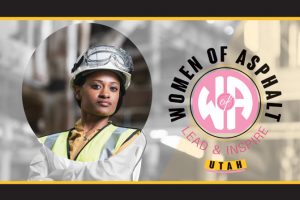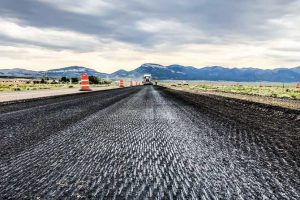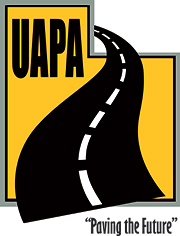You were the first president of UAPA. Tell us about that experience.
I was part of the group that organized our association. It was a different experience – something I had never done before, but I learned a lot. It was also one of the most rewarding experiences I have ever had.
We – meaning me and our small group (most of whom became our charter members) spent about a year and a half preparing and exploring. We decided to launch. Reed didn’t come into the association until the middle of the first year.
Somehow, I became our first president. When everyone asked, I didn’t say no. I had been involved in trying to create this association for ten years prior, and had a passion. I had a supportive boss at Staker Parson who believed Utah needed the association, and so did I. But the organization itself was in need. Some individuals were working for sister companies involved with similar associations, and they understood the benefits of organizing into one group.
We had 13 members to start with, and held a small conference that first year. It was a small event that occurred a few months after Reed started. There were a lot of challenges that first year, including interviewing and hiring Reed. We interviewed many, many people, but recognized he would be exceptional. We were fortunate. It was his brother who “put a bug in his ear,” so to speak.
We started from scratch and had many challenges, such as creating our policies, identifying the goals of the association, and forming the nonprofit. It was a challenge to get it off the ground, let alone get our name out there to be recognized.
We convinced the charter members that they would need to support the association financially for the first three years. The reality is, we’re in a small market, which presents its own set of challenges.
The second president was?
Waylund Ludlow. I was relieved, but we still had work to do. My involvement didn’t stop for five years or so. It was nonstop work. Then I took the role as president for a second time. The passion was still there because, for me, it was personal.
Describe your education background.
Well, I made it out of high school. I went to the University of Utah. Back story: I was involved in a family-owned business – not asphalt – for many years, since my teens. We did garbage removal. The company was ACE Disposal, which my dad started in the early 1970s. He started with one truck and, from there, built the business. However, he decided to sell it in the early 1990s. At that time, I had a friend in the asphalt business – Staker. This friend made a suggestion to me, and I jumped. I’d been with Staker for 11 years. We portioned what is used from refined crude oil used to make asphalt. I witnessed a lot while working there, specifically, that asphalt oil doesn’t follow that price of gasoline.
Are there any specific individuals that had a major impact on your career decision?
Scott Beall – he was my first boss in this industry, and it was he who taught me the ropes. His attention to detail was and is incredible. One of the things I learned from him was the importance of building relationships with customers and vendors. Another lesson learned was to ask one more question. Get to know the people surrounding you.
What is the most rewarding part of your career?
Being able to drive down the highway in the state and see countless roads I helped build. Another reward is infrastructure and witnessing the work used wisely. Being able to see something from UDOT’s perspective.
We have growth in Utah; I was involved in an infrastructure study taking the state to 2040. Our population is going to double, and municipalities need guidance on how best to use their resources. UAPA has helped these cities and towns understand the best pavements suitable for their needs. We’ve always worked well with varied public works associations.
I would tell a student you can make a very good living in this industry. Secondly, you can see the fruits of your labor every day. Just drive down any street. And third, this industry allows you to use your head and your hands; it’s a broader-skill industry.
What do you think will be some of the dominant trends within the asphalt industry in the next five to ten years?
One of the biggest things will be conserving our resources and how best to use them. We need a better understanding how to use recycled asphalt in pavements efficiently. We need to continue to find better ways to use resources and how to use our asphalt oil better. Since oil is a petroleum-based product, it’s finite. We do not have a never-ending supply there.
If you could wave a magic wand, what would be the one thing you would like to see change immediately in the asphalt construction industry?
First thought, attracting more people to our industry. We need a workforce.
In looking back at the last ten years, what stands out for you? Are there any accomplishments that you are especially proud of?
We’ve accomplished a lot of my vision – we’re not finished by any means. This is not as big as it’s going to get; we’re nowhere near there yet. Presently, we have approximately 100 members, but we still need more.
Additionally, we’ve developed a brand and a brand name. We stand for something. “UAPA” rolls off the tongue of UDOT leaders and leaders in the industry. We’re the source for all things “asphalt pavement.”
But our biggest wins have been with UDOT. They were the key and main reason we started UAPA. AGC and ABC include highways, but the scope was too broad, and we needed something specific. When we would go to UDOT, AGC, and APWA as individuals – we couldn’t and didn’t get anything accomplished. We needed focus and a single voice. And that voice became UAPA.
I am so proud of the asphalt conference. I get to travel around the U.S. with national associations. I get to see and hear feedback. It’s remarkable. Please understand that events like ours only happen in a handful of states. We need to continue to focus on education to bring more people into our organization and the industry.
At times, we’ve discussed the benefits of a regional asphalt/pavement organization. It could be a next step. Many of those in the asphalt industry surrounding us don’t have the opportunities or associations we have. Nevada has a small one. However, Idaho and Wyoming don’t have anything, although some core companies in UAPA receive a small amount of support from companies in Idaho.
If you look at your career and life, what would be three things that you have learned that you would pass onto a student choosing their specialty?
The first would be money. I would tell a student you can make a very good living in this industry. Secondly, you can see the fruits of your labor every day. Just drive down any street. And third, this industry allows you to use your head and your hands; it’s a broader-skill industry.
Recently we hosted a small group of young people from Ogden Weber Applied Tech – we took them around and showed them the operations. This may have sparked something in some of them. And we explored the opportunities this industry provides. It’s not just holding a sign on the road. We gave the group math quizzes because we use math every day. We also use science, so both disciplines factor into this line of work.
Where do you see UAPA in 10 years?
The next 10 years – a growth trajectory similar to the past 10 years is probably not sustainable. But I would sure like to see it happen.









